New Modified Couple Stress Theory of Thermoelasticity with Hyperbolic Two Temperature
Abstract
:1. Introduction
2. Basic Equations
- 1.
- Constitutive Relations
- 2.
- Equation of Motion
- 3.
- Heat Conduction Equation Proposed by Youssef [15]
3. Formulation and Solution of the Problem
4. Boundary Conditions
- i.
- Normal stress
- ii.
- Tangential stress
- iii.
- Vanishing of tangential couple stress
- iv.
- Condition of temperature change
5. Inversion of the Transforms
6. Numerical Findings and Interpretation
- The solid line relates to H2T theory with
- The dashed line relates to H2T theory with
- The dotted line relates to Classical 2T (C2T) theory with
- The dot-dashed line relates to Classical 2T (C2T) theory with
7. Conclusions
Author Contributions
Funding
Data Availability Statement
Conflicts of Interest
Nomenclature
| constant of the dimension of length | |
| Thermal elastic coupling tensor, | |
| thermodynamic temperature, | |
| fiber reinforcement elastic parameters, | |
| conductive temperature, | |
| Stress tensors (Nm−2), | |
| Dirac’s delta function, | |
| shear modulus in longitudinal shear in the preferred direction | |
| elastic constants, | |
| Specific heat at constant strain, | |
| couple stress moment tensor | |
| elasticity constants | |
| Thermal conductivity, | |
| shear modulus in transverse shear across the preferred direction | |
| curvature tensor, | |
| a | Direction of fibre-reinforcement |
| Strain tensors, | |
| Reference temperature | |
| Heaviside unit step function | |
| Permutation symbol, | |
| Two temperature parameters, | |
| time, | |
| Medium density (kgm−3), | |
| the density of the medium, | |
| rotation components, | |
| Components of displacement (m), | |
| Kronecker delta, | |
| material length scale parameters | |
| Linear thermal expansion coefficient, | |
| Phase lag of temperature gradient |
References
- Pipkin, A.C.; Rogers, T.G. Plane Deformations of Incompressible Fiber-Reinforced Materials. J. Appl. Mech. 1971, 38, 634–640. [Google Scholar] [CrossRef]
- Spencer, A.J.M. Deformations of Fibre-Reinforced Materials. Clarendon Press: Oxford, UK, 1972. [Google Scholar]
- Pipkin, A.C. Finite Axisymmetric Deformations Of Ideal Fibre-Reinforced Composites. Q. J. Mech. Appl. Math. 1975, 28, 271–284. [Google Scholar] [CrossRef]
- Testa, R.; Boley, B. Basic thermoelastic problems in fiber-reinforced materials. In Mechanics of Composite Materials; Elsevier: Amsterdam, The Netherlands, 1970; pp. 361–385. [Google Scholar] [CrossRef]
- Craig, M.S.; Hart, V.G. The Stress Boundary-Value Problem For Finite Plane Deformations Of A Fibre-Reinforced Material. Q. J. Mech. Appl. Math. 1979, 32, 473–498. [Google Scholar] [CrossRef]
- Rogers, T.G. Finite Deformation and Stress in Ideal Fibre-Reinforced Materials. In Continuum Theory of the Mechanics of Fibre-reinforced Composites; Springer: Vienna, Austria, 1984; pp. 33–71. [Google Scholar] [CrossRef]
- Bayones, F.S.; Hussien, N.S. Fibre-Reinforced Generalized Thermoelastic Medium Subjected to Gravity Field. J. Mod. Phys. 2015, 6, 1113–1134. [Google Scholar] [CrossRef] [Green Version]
- Said, S.M. A fiber-reinforced thermoelastic medium with an internal heat source due to hydrostatic initial stress and gravity for the three-phase-lag model. Multidiscip. Model. Mater. Struct. 2017, 13, 83–99. [Google Scholar] [CrossRef]
- Voigt, W. Theoretische Studien Über Die Elasticitätsverhältnisse der Krystalle; Royal Society of Sciences in Göttingen: Göttingen, Germany, 1887; Available online: https://www.worldcat.org/title/theoretische-studien-uber-die-elasticitatsverhaltnisse-der-krystalle/oclc/634403068 (accessed on 24 June 2021).
- Cosserat, E.; Cosserat, F. Théorie des Corps déformables. Nature 1909, 81, 67. [Google Scholar] [CrossRef] [Green Version]
- Mindlin, R.D. Influence of couple-stresses on stress concentrations—Main features of cosserat theory are reviewed by lecturer and some recent solutions of the equations, for cases of stress concentration around small holes in elastic solids, are described. Exp. Mech. 1963, 3, 1–7. [Google Scholar] [CrossRef]
- Koiter, W.T. Couple-Stresses in the Theory of Elasticity, I & II, Philos. Philos. Trans. R. Soc. Lond. B 1969, 67, 17–44. [Google Scholar]
- Yang, F.; Chong, A.; Lam, D.; Tong, P. Couple stress based strain gradient theory for elasticity. Int. J. Solids Struct. 2002, 39, 2731–2743. [Google Scholar] [CrossRef]
- Chen, W.; Li, X. A new modified couple stress theory for anisotropic elasticity and microscale laminated Kirchhoff plate model. Arch. Appl. Mech. 2013, 84, 323–341. [Google Scholar] [CrossRef]
- Youssef, H. Theory of two-temperature-generalized thermoelasticity. IMA J. Appl. Math. 2006, 71, 383–390. [Google Scholar] [CrossRef]
- Youssef, H.M. State-Space Approach to Two-Temperature Generalized Thermoelasticity without Energy Dissipation of Medium Subjected to Moving Heat Source. Appl. Math. Mech. 2013, 34, 63–74. [Google Scholar] [CrossRef]
- Youssef, H.M.; El-Bary, A.A. Theory of hyperbolic two-temperature generalized thermoelasticity. Mater. Phys. Mech. 2018, 40, 158–171. [Google Scholar] [CrossRef]
- Youssef, H.M. Theory of Generalized Thermoelasticity with Fractional Order Strain. JVC/Journal Vib. Control 2016, 22, 3840–3857. [Google Scholar] [CrossRef]
- Kaur, I.; Lata, P.; Singh, K. Effect of Hall current in transversely isotropic magneto-thermoelastic rotating medium with fractional-order generalized heat transfer due to ramp-type heat. Indian J. Phys. 2020, 95, 1165–1174. [Google Scholar] [CrossRef]
- Lata, P.; Kaur, I.; Singh, K. Effect of thermal laser pulse in transversely isotropic Magneto-thermoelastic solid due to Time-Harmonic sources. Coupled Syst. Mech. 2020, 9, 343. [Google Scholar] [CrossRef]
- Craciun, E.-M.; Baesu, E.; Soós, E. General solution in terms of complex potentials for incremental antiplane states in prestressed and prepolarized piezoelectric crystals: Application to Mode III fracture propagation. IMA J. Appl. Math. 2004, 70, 39–52. [Google Scholar] [CrossRef]
- Khan, A.A.; Bukhari, S.R.; Marin, M.; Ellahi, R. Effects Of Chemical Reaction On Third-Grade Mhd Fluid Flow Under The Influence Of Heat And Mass Transfer With Variable Reactive Index. Heat Transf. Res. 2019, 50, 1061–1080. [Google Scholar] [CrossRef]
- Marin, M.; Oechsner, A. The effect of a dipolar structure on the Hölder stability in Green–Naghdi thermoelasticity. Contin. Mech. Thermodyn. 2017, 29, 1365–1374. [Google Scholar] [CrossRef]
- Singh, A.; Das, S.; Altenbach, H.; Craciun, E.-M. Semi-infinite moving crack in an orthotropic strip sandwiched between two identical half planes. ZAMM J. Appl. Math. Mech. Z. Angew. Math. Mech. 2019, 100, e201900202. [Google Scholar] [CrossRef]
- Zhang, L.; Bhatti, M.M.; Marin, M.; Mekheimer, K.S. Entropy Analysis on the Blood Flow through Anisotropically Tapered Arteries Filled with Magnetic Zinc-Oxide (ZnO) Nanoparticles. Entropy 2020, 22, 1070. [Google Scholar] [CrossRef] [PubMed]
- Singh, A.; Das, S.; Craciun, E.-M. Effect of Thermomechanical Loading on an Edge Crack of Finite Length in an Infinite Orthotropic Strip. Mech. Compos. Mater. 2019, 55, 285–296. [Google Scholar] [CrossRef]
- Marin, M.; Vlase, S.; Paun, M. Considerations on double porosity structure for micropolar bodies. AIP Adv. 2015, 5, 037113. [Google Scholar] [CrossRef] [Green Version]
- Bhatti, M.M.; Ellahi, R.; Zeeshan, A.; Marin, M.; Ijaz, N. Numerical study of heat transfer and Hall current impact on peristaltic propulsion of particle-fluid suspension with compliant wall properties. Mod. Phys. Lett. B 2019, 33. [Google Scholar] [CrossRef]
- Bhatti, M.M.; Yousif, M.A.; Mishra, S.R.; Shahid, A. Simultaneous influence of thermo-diffusion and diffusion-thermo on non-Newtonian hyperbolic tangent magnetised nanofluid with Hall current through a nonlinear stretching surface. Pramana 2019, 93, 88. [Google Scholar] [CrossRef]
- Zhang, L.; Bhatti, M.M.; Michaelides, E.E. Thermally developed coupled stress particle–fluid motion with mass transfer and peristalsis. J. Therm. Anal. Calorim. 2020, 143, 2515–2524. [Google Scholar] [CrossRef]
- Golewski, G.L. Validation of the favorable quantity of fly ash in concrete and analysis of crack propagation and its length—Using the crack tip tracking (CTT) method—In the fracture toughness examinations under Mode II, through digital image correlation. Constr. Build. Mater. 2021, 296, 122362. [Google Scholar] [CrossRef]
- Golewski, G.L. Evaluation of fracture processes under shear with the use of DIC technique in fly ash concrete and accurate measurement of crack path lengths with the use of a new crack tip tracking method. Measurement 2021, 181, 109632. [Google Scholar] [CrossRef]
- Golewski, G.L. The Beneficial Effect of the Addition of Fly Ash on Reduction of the Size of Microcracks in the ITZ of Concrete Composites under Dynamic Loading. Energies 2021, 14, 668. [Google Scholar] [CrossRef]
- Kaur, I.; Singh, K.; Ghita, G.M.D. New analytical method for dynamic response of thermoelastic damping in simply supported generalized piezothermoelastic nanobeam. ZAMM J. Appl. Math. Mech. Z. Angew. Math. Mech. 2021, 101, e202100108. [Google Scholar] [CrossRef]
- Kaur, I.; Lata, P.; Singh, K. Study of transversely isotropic nonlocal thermoelastic thin nano-beam resonators with multi-dual-phase-lag theory. Arch. Appl. Mech. 2020, 91, 317–341. [Google Scholar] [CrossRef]
- Kumar, R.; Garg, S.K.; Ahuja, S. Wave Propagation in Fibre-Reinforced Transversely Isotropic Thermoelastic Media with Initial Stress at the Boundary Surface. J. Solid Mech. 2015, 7, 223–238. [Google Scholar]
- Honig, G.; Hirdes, U. A method for the numerical inversion of Laplace transforms. J. Comput. Appl. Math. 1984, 10, 113–132. [Google Scholar] [CrossRef] [Green Version]
- William H. Press; Teukolsky, S.A.; Flannery, B.P. Numerical recipes in Fortran; Cambridge University Press: Cambridge, UK, 1980. [Google Scholar]
- Kumar, R.; Ahuja, S.; Garg, S.K. Effect of Initial Stress on the Propagation Characteristics of Waves in Fiber-Reinforced Transversely Isotropic Thermoelastic Material under an Inviscid Liquid Layer. J. Thermodyn. 2014, 2014, 34276. [Google Scholar] [CrossRef]
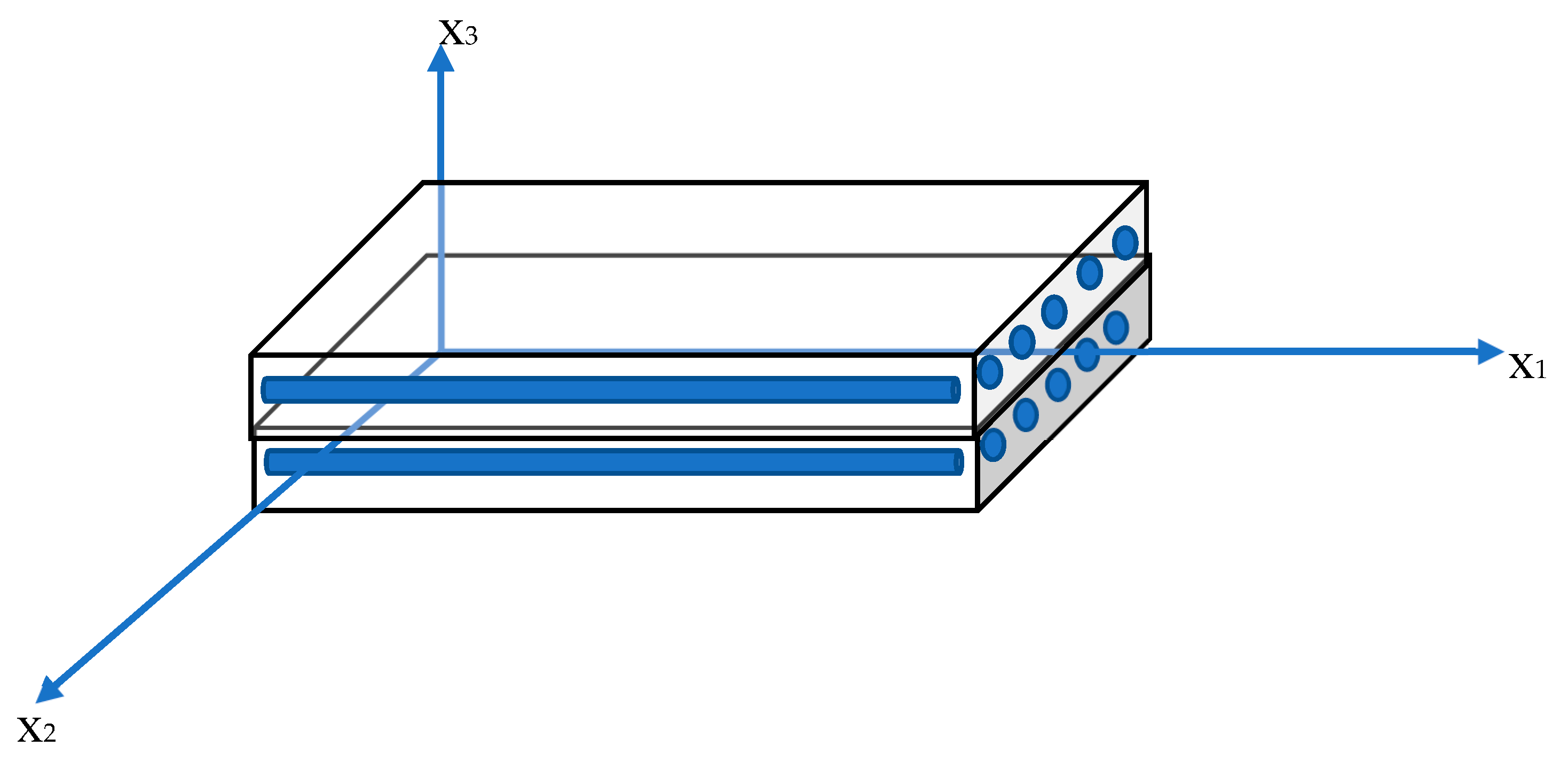
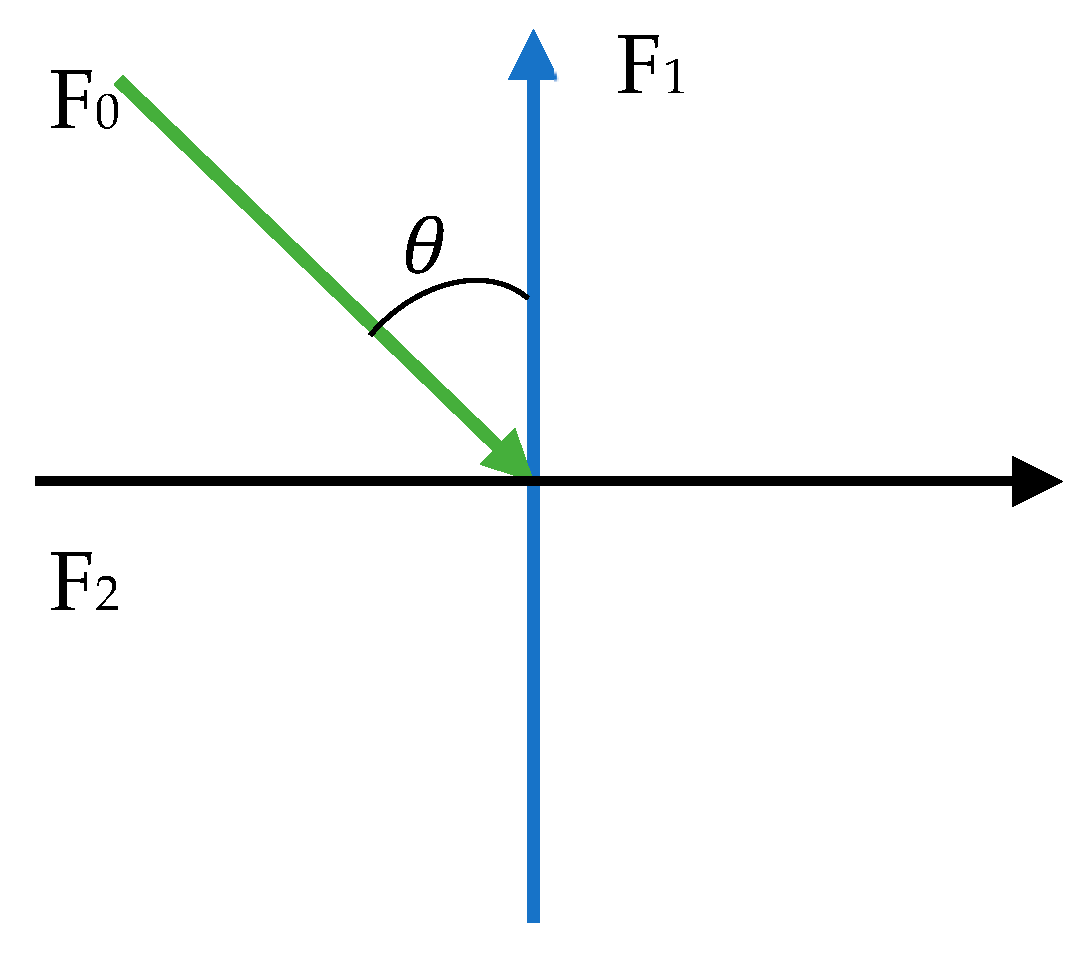
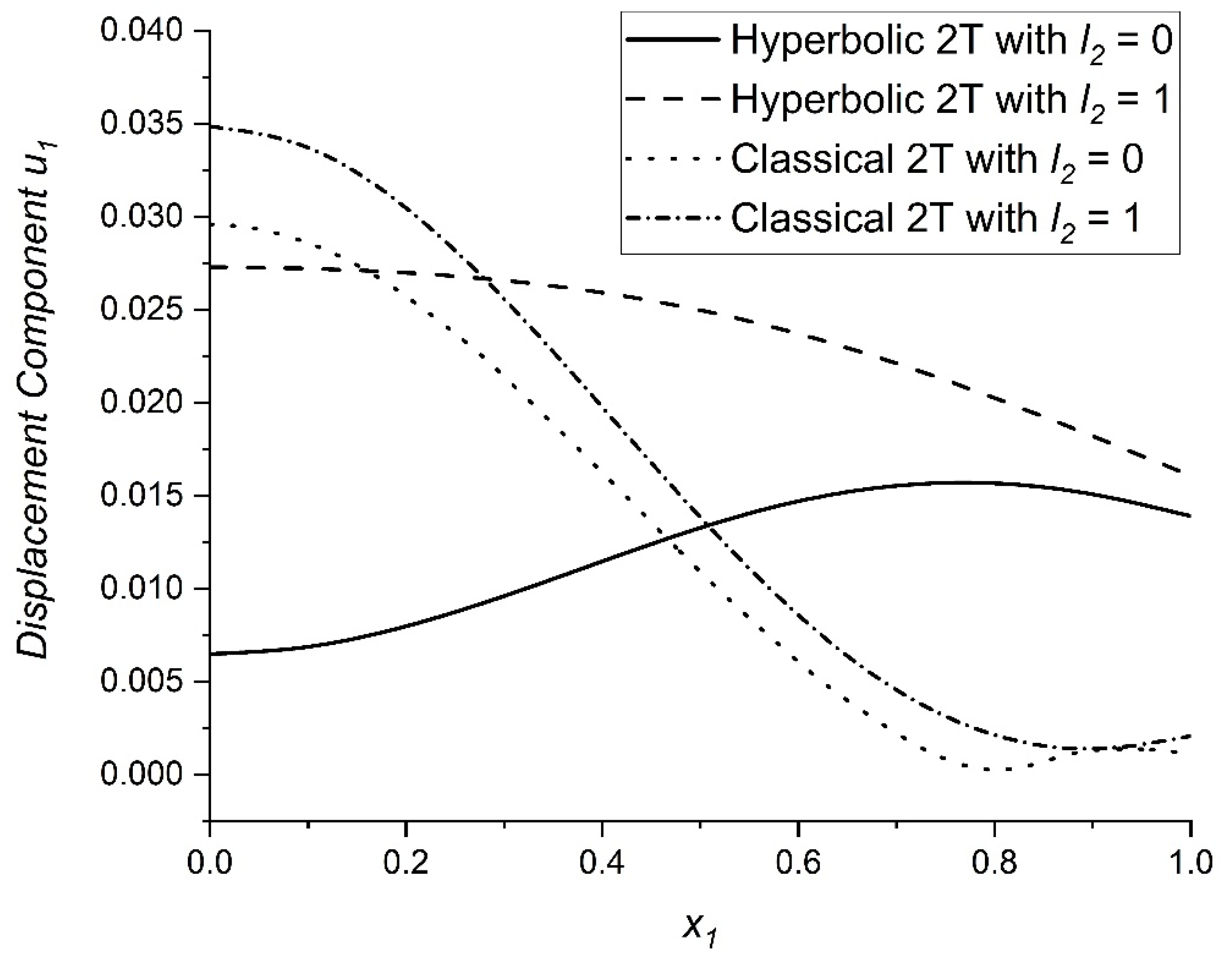
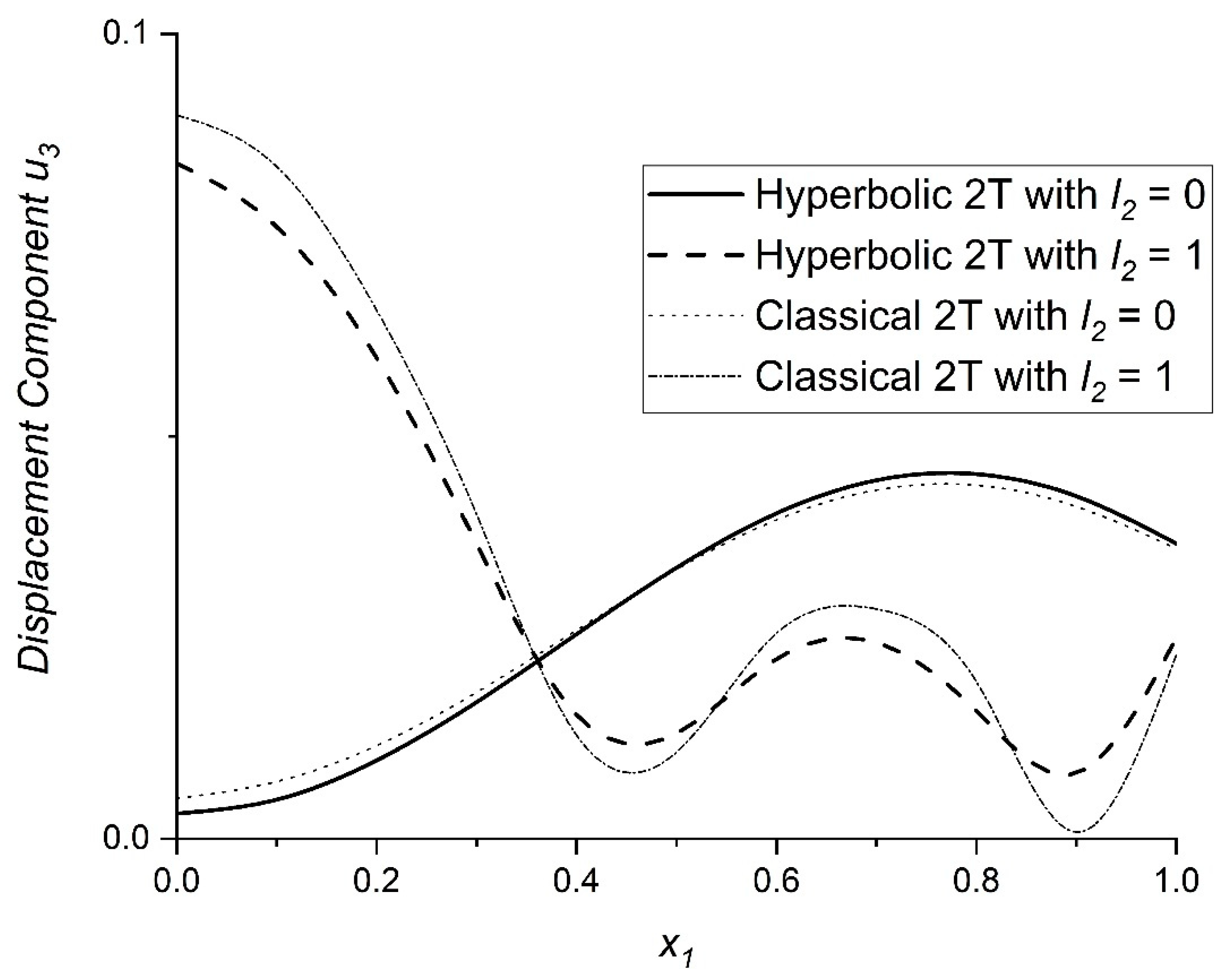
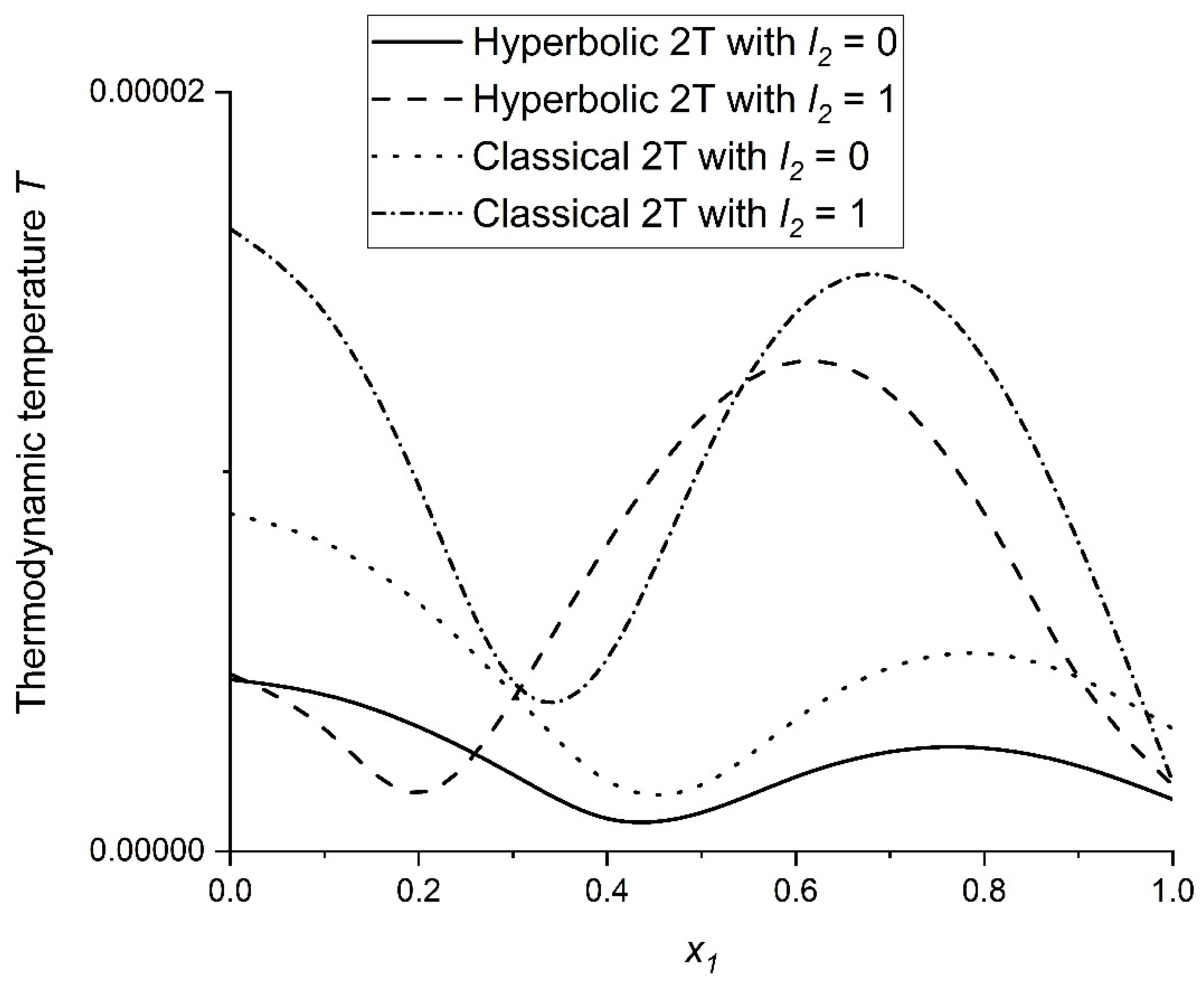
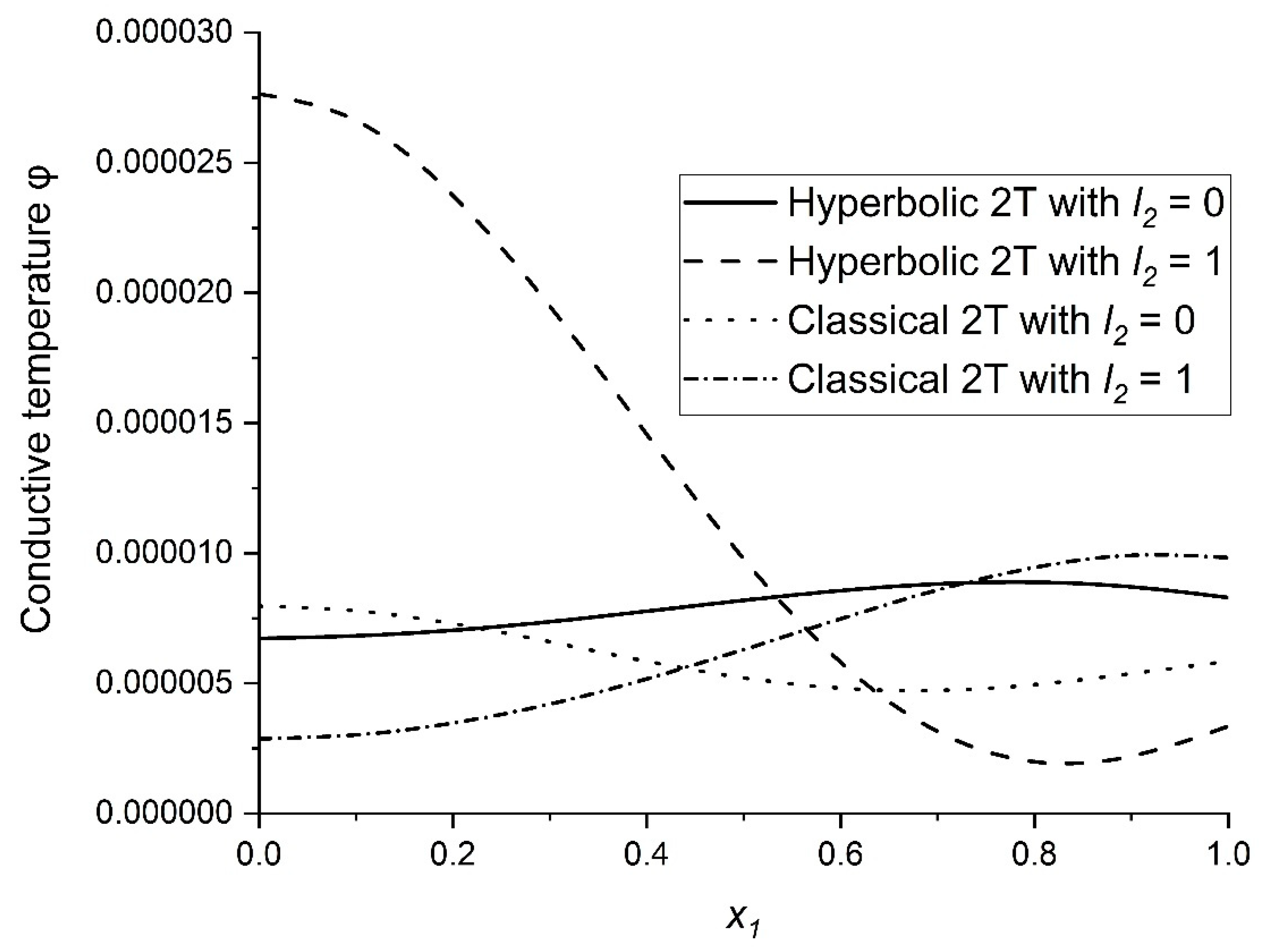



Disclaimer/Publisher’s Note: The statements, opinions and data contained in all publications are solely those of the individual author(s) and contributor(s) and not of MDPI and/or the editor(s). MDPI and/or the editor(s) disclaim responsibility for any injury to people or property resulting from any ideas, methods, instructions or products referred to in the content. |
© 2023 by the authors. Licensee MDPI, Basel, Switzerland. This article is an open access article distributed under the terms and conditions of the Creative Commons Attribution (CC BY) license (https://creativecommons.org/licenses/by/4.0/).
Share and Cite
Kaur, I.; Singh, K.; Craciun, E.-M. New Modified Couple Stress Theory of Thermoelasticity with Hyperbolic Two Temperature. Mathematics 2023, 11, 432. https://doi.org/10.3390/math11020432
Kaur I, Singh K, Craciun E-M. New Modified Couple Stress Theory of Thermoelasticity with Hyperbolic Two Temperature. Mathematics. 2023; 11(2):432. https://doi.org/10.3390/math11020432
Chicago/Turabian StyleKaur, Iqbal, Kulvinder Singh, and Eduard-Marius Craciun. 2023. "New Modified Couple Stress Theory of Thermoelasticity with Hyperbolic Two Temperature" Mathematics 11, no. 2: 432. https://doi.org/10.3390/math11020432






